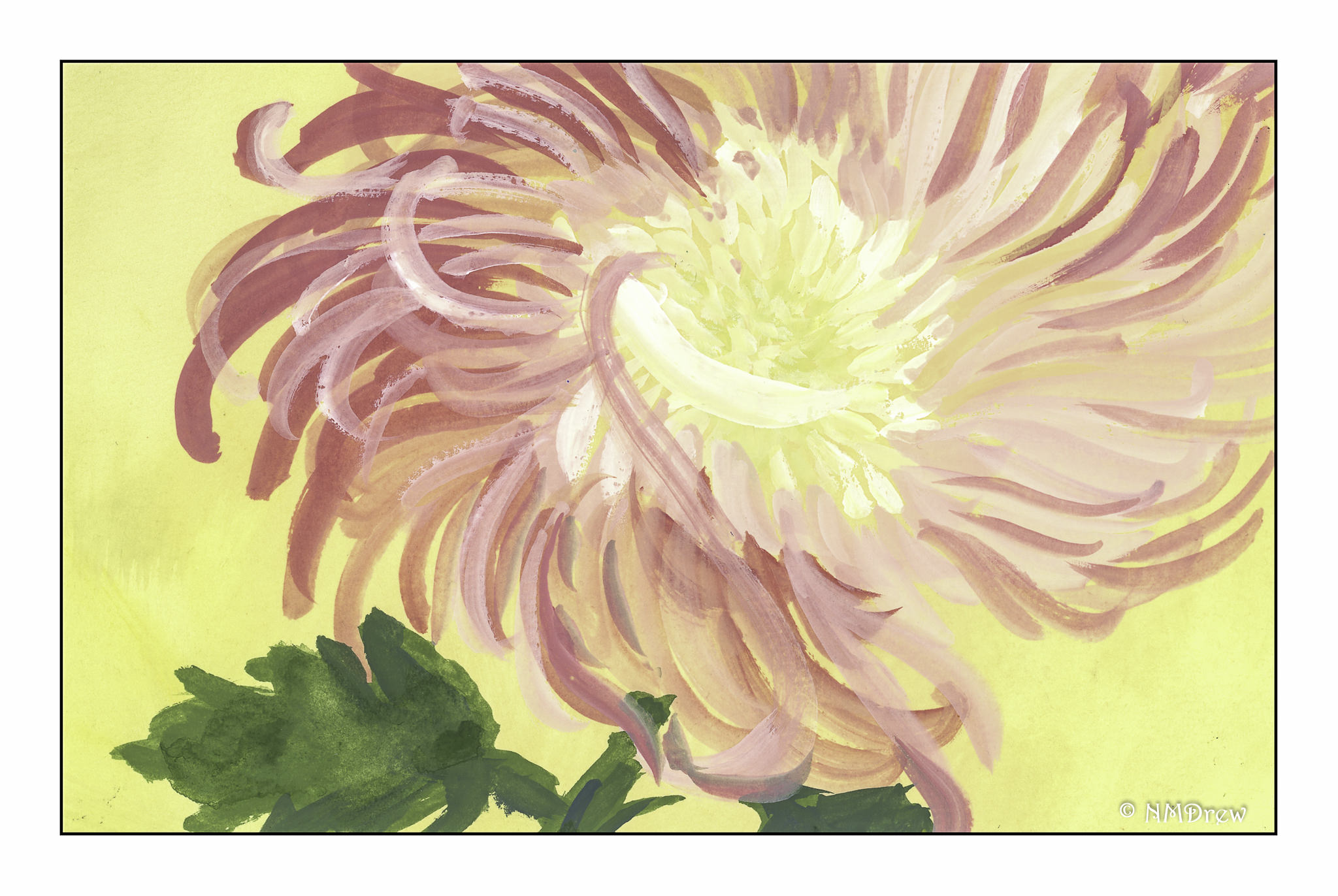
For many years I did Chinese painting and sumi-e (Japanese ink painting), and learned a lot about brush strokes. While the brushes used in these schools of painting are brushes, they are constructed differently than western art brushes and have very different characteristics. However, what you do with them is the same in many instances. Both Chinese painting and sumi-e depend on lines made with ink to create shapes and forms, express colors where none exist, and add color, too.
To create the flowers above, I simply loaded my round sable, placed the tip on the paper, and pressed down gently as I moved the brush from a vertical to more horizontal. The point has more color than the body of the brush and this allows for gradation of colors. The point can be near the stem of a flower and leave a lighter tipped petal at the edge, or be the outer edge and lead to the center; the outer petal is then sharp and pointed. As well, paint can be added to vary colors, provide details, and so on.
Above, the blue flowers have the brush point closer to the stem and the yellow daffodils have the point used as the end of the petal. The freesia, the yellow flower, employs both techniques with extra color added. The alstromeria is done with the pressing technique, extra paint added while still damp, and final lines added with a brush point once the paint was dried.
I tend to forget that brush work is as important in watercolor as it is in ink painting. Shapes and lines and textures are expressed as they are in Asian ink painting. The fact that color is always the most attractive element in watercolor keeps me from remembering the importance of good brushwork.


